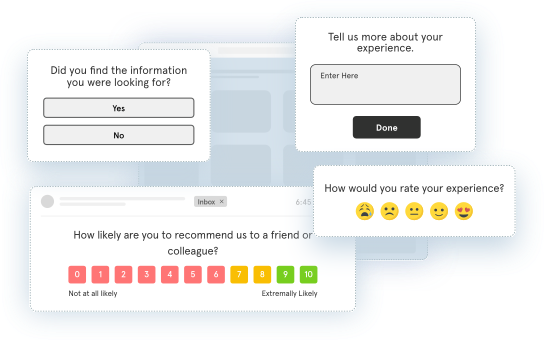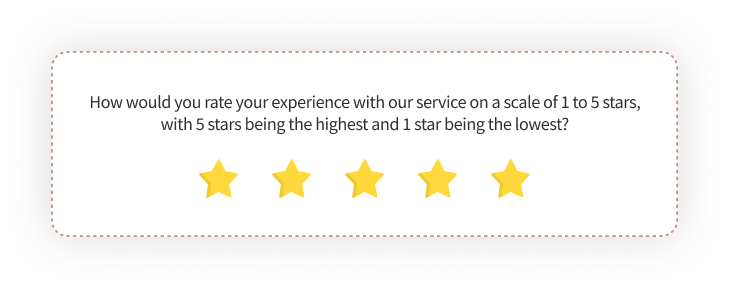Customers are the pillars of any successful business. Maintaining a high level of customer satisfaction and understanding their thoughts and feelings about your brand, products, or services are essential. To give your customers the best experience, you have to know what's going well and what's not for your business. This is where a customer experience survey comes into play.
They offer invaluable insights into the minds of your customers, make data-driven decisions, and help you refine your products or services.
In this blog we will delve deep into customer experience surveys, exploring their significance, types, survey questions, and how they can propel your business to new heights. Let's get started!
TL;DR
-
Customer experience surveys are used by businesses to gather information and insights from their customers about their interactions, perceptions, and overall satisfaction with the products across the customer's journey.
-
They can be of various types like based on CX metrics NPS, CSAT, CES or question types like Likert scale, multiple choice etc, or based on symbols like visual ratings.
-
Designing an effective CX survey requires setting clear goals, choosing target audience, using suitable questions types and setting them in the right order.
-
Customer experience survey questions may encompass a wide range of topics, including demographics, product feedback, overall customer satisfaction, post-purchase experiences, exit intent insights, evaluations of customer service, website feedback, and more.
-
With a powerful survey tool like Zonka Feedback, you can easily create and share customer experience surveys, analyze survey results, take the required actions, and close the feedback loop. Sign up for a 14-day free trial or schedule a demo to offer a positive customer experience.
Measure Customer Satisfaction and Improve Customer Experience🔥
Create customized surveys and feedback forms and take real-time feedback from your customers at all touchpoints.

What are Customer Experience Surveys?
Customer experience questionnaire, often abbreviated as CX surveys, are used by businesses and organizations to gather feedback and insights on how customers interact with your company's products, services, or overall brand.
These surveys are designed to assess and evaluate various aspects of the customer experience such as the quality of customer service, measuring customer satisfaction, gathering product feedback, and more providing valuable information for businesses to improve and refine their offerings.
Sample Customer Experience Questionnaire
To better understand your customers' perspectives and improve their overall experience, you must consider using a CX survey. Here's a quick general customer satisfaction survey template that you can use to gauge customer experience and gather actionable insights from your customers:
Understanding the Essence of CX Surveys
In today's competitive business space, understanding and improving the customer experience is paramount to success. Indeed, a recent study revealed that superior customer experience ranks as the foremost business priority for nearly 46% of businesses over the next five years, surpassing product and pricing considerations. Let us look at the reasons why CX surveys matter the most in the current times.
Why CX Surveys Matter in Today's Business Landscape?
Here are some key reasons why using CX platforms for surveys is indispensable in today's time:
-
Customer-Centricity: Modern business leaders prioritize customer-centric approaches. CX surveys are a direct channel for customers to express their needs, preferences, and concerns.
-
Data-Driven Decision Making: Through CX surveys, customers provide feedback that can be used to gather data and make data-driven business decisions. They allow companies to base their strategies and improvements on real customer insights.
-
Competitive Advantage: Companies that actively collect and act on customer feedback gain a competitive edge. They can tailor their products and services to better meet customer expectations.
-
Customer Retention: High-quality customer's experience foster loyal customers. CX surveys help identify areas that might lead to churn and allow you to address issues proactively.
-
Innovation and Improvement: Businesses can use customer feedback from CX surveys to innovate, adapt, and continually improve their offerings, ensuring they stay relevant and responsive to changing customer needs.
-
Reputation Management: Positive customer feedback collected through CX surveys can be a valuable asset in managing your company's reputation. Happy customers are more likely to become brand advocates.
Types of Customer Experience Surveys
Customer Experience (CX) surveys come in various types, each tailored to measure specific facets of the customer journey. The selection of a survey type should align with your objectives and the stage of the customer journey you aim to assess and enhance.
You can use a combination of these survey types to gain a comprehensive understanding of the customers experience.
1. Net Promoter Score (NPS) Surveys
Net Promoter Score surveys can be used anytime in the customer lifecycle and measure customer loyalty by asking existing customers how likely they are to recommend the company to others. NPS survey question ask "On a scale of 0 to 10, how likely are you to recommend our company/product/service to a friend or colleague?." Respondents are categorized as Promoters (9-10), Passives (7-8), or Detractors (0-6).
Here is an NPS survey template that you can leverage to get an idea of how loyal your customers are to your brand.
2. Customer Satisfaction (CSAT) Surveys
CSAT surveys assess overall customer satisfaction with a specific interaction, product, or service. Mostly a question like "How satisfied are you with your experience with [product/service/interaction]? Please rate on a scale of 1 to 5 (or 1 to 7)" helps to gauge customer satisfaction.
You can leverage this customer satisfaction survey template to measure satisfaction among customers and improve on the areas that require effort.
3. Customer Effort Score (CES) Surveys
A Customer Effort Score survey gauges the ease with which customers can complete a specific task or resolve an issue. A lower score indicates a higher level of effort required. This survey type is particularly useful in identifying pain points in the customer journey, helping you streamline processes and offer positive experience.
Here's a Customer Effort Score survey template that you can use to gauge the customer experience with respect to the effort it takes for your customers to perform tasks.
4. Visual Rating Surveys
Visual rating surveys utilize images or symbols to measure customer sentiment or satisfaction or sentiment in an engaging and user-friendly way. These images allow respondents to quickly and intuitively express their feelings about a product, service, or experience without relying on texts. Some examples include:
-
Thumbs Up/Down: In Thumbs up/down surveys, respondents indicate their approval or disapproval by selecting either the thumbs-up (like) or thumbs-down (dislike) option. These surveys are commonly used in online platforms and social media to quickly perform sentiment analysis.
-
Smiley Face Surveys: Smiley face surveys present a series of smiley faces, typically ranging from very happy to very unhappy. Respondents are asked to select the smiley face that best represents their level of satisfaction or sentiment.
-
Star Rating: Star ratings surveys like 5 star surveys usually use a scale of 1 to 5 stars, with 5 stars representing the highest level of satisfaction or quality and 1 star indicating the lowest. Users rate their satisfaction or experience by selecting the appropriate number of stars.
5. Likert Scale Surveys
Likert scale surveys use a range of answer options (e.g., from "agree" to "disagree") to measure the level of agreement or disagreement with statements or questions. This survey type allows for more nuanced responses, making it suitable for collecting detailed feedback on various aspects of the customer experience, from individual transactions to overall satisfaction.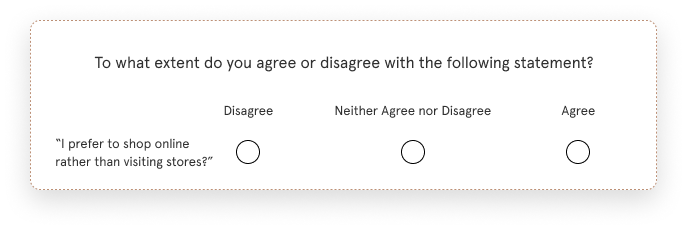
Designing Effective CX Surveys
Designing a successful customer experience survey is a crucial step in gathering meaningful insights from your customers. It's essential to create effective surveys, that are not only engaging but also capable of providing actionable data.
Key Components of a CX Survey
Here are some key components that you must keep in mind while designing a CX survey:
-
Clear Objectives: Begin by defining the objectives of your CX survey. What specific aspects of the customer experience are you trying to measure or improve? Are you interested in customer satisfaction, product feedback, or overall brand perception? Having clear objectives will guide the survey in the right direction.
-
Target Audience: Identify the right audience for your survey. Are you surveying recent customers, long-term clients, or specific user segments? Tailor your survey questions to suit the characteristics and expectations of your target audience.
-
Question Types: Choose the appropriate question types like multiple choice questions, open ended questions, closed ended questions, etc. based on your objectives. Mix and match question types to get a comprehensive view of the customer experience and keep survey questions to the point.
-
Question Order: By leveraging a CSAT survey software that has survey logic and branching to tailor questions and the survey path based on respondents' previous answers, you can create a more personalized and relevant experience and gather more meaningful data.
-
Device Optimization: As many respondents access online surveys on different devices, like mobile, tablets, ensure that your survey is device-friendly. Test the survey's appearance and usability on various screen sizes and devices.
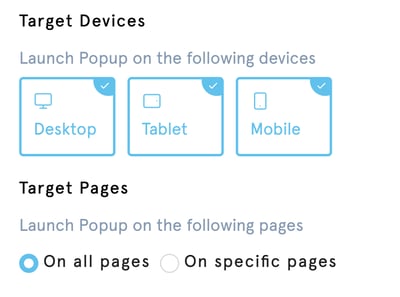
Customer Experience Questions to Ask in your Surveys
Let us look at the customer experience questions that you can add in your surveys and capture maximum response.
1. Demographic Survey Questions
Demographic surveys collect information about your customers' background, such as age, gender, location, and profession. This data helps in understanding your customer base and creating targeted and effective marketing campaigns and tailor your products or services to meet their specific needs. Here are some customer experience survey questions on demographics.
-
What is your age group?
-
Which gender do you identify with?
-
Where do you reside (city/country)?
-
What is your highest level of education?
-
What is your employment status?
-
What is your marital status, and do you have children?
-
What is your annual household income?
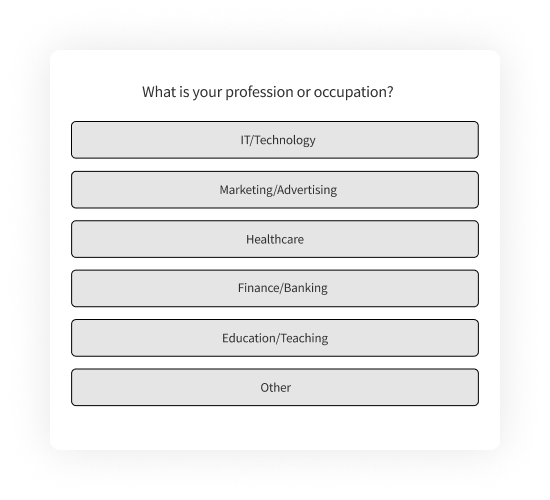
2. Product Feedback Survey Questions
Product survey questions are designed to gather insights about customers' experiences with a specific product. These surveys can help in refining the product, identifying strengths, addressing weaknesses and meeting customer expectations. Here are some customer experience survey questions related to product feedback.
-
Have you encountered any issues or challenges while using our product?
-
Which features of the product do you find most valuable?
-
What improvements or additional features would enhance your experience with our product?
-
On a scale of 1 to 5, how easy was it to learn to use our product?
-
Have you had any technical difficulties with our product? Please describe.
-
How frequently do you use our product in your daily routine?
-
How does our product compare to similar products you've used in the past?
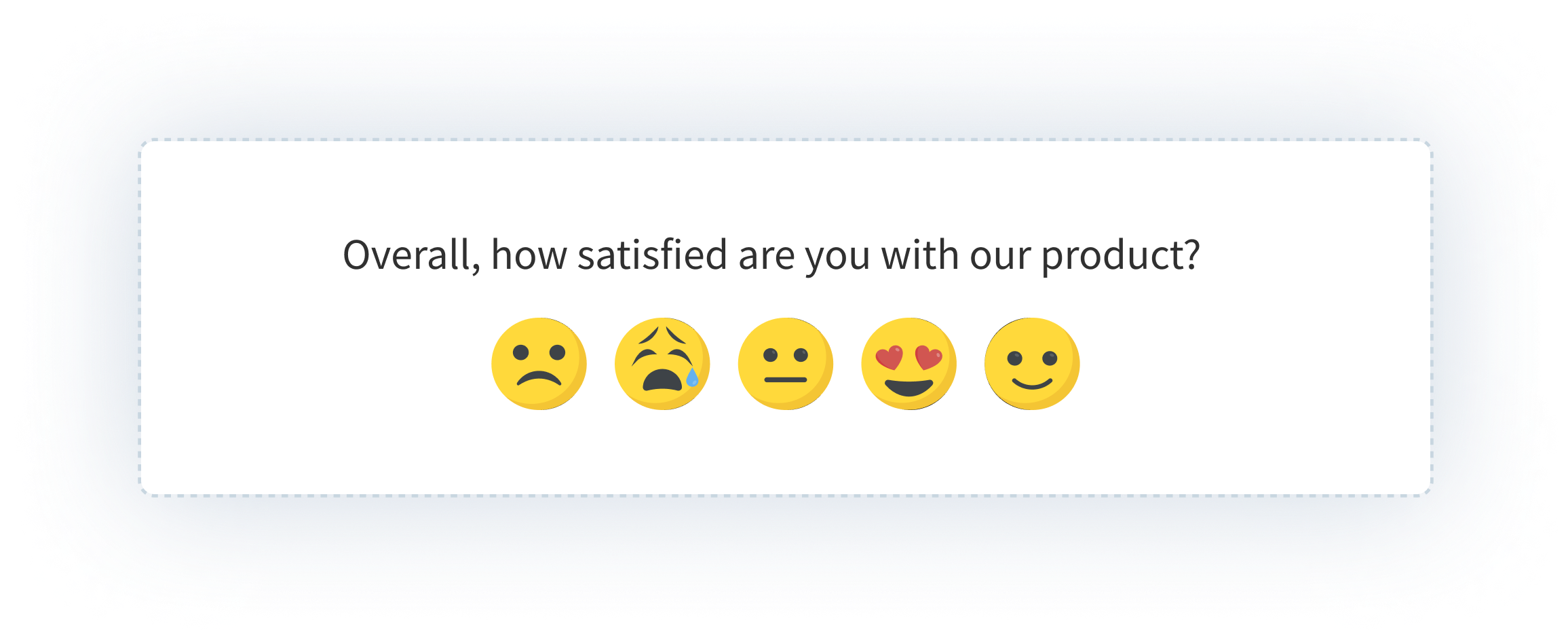
3. Customer Satisfaction Survey Questions
Customer satisfaction surveys aim to measure overall satisfaction with your company, product, or service. They provide a holistic view of how customers perceive your brand. High customer satisfaction is linked to customer loyalty and positive word-of-mouth marketing efforts. Here are some customer experience survey questions on satisfaction among customers.
-
How satisfied are you with our company's services?
-
What aspects of our service do you find most satisfying or enjoyable?
-
Is there anything about our service that you find dissatisfying or subpar?
-
How likely are you to continue using our services in the future?
-
What improvements or changes would make you even more satisfied with our services?
-
On a scale of 1 to 10, how would you rate your experience with our company?
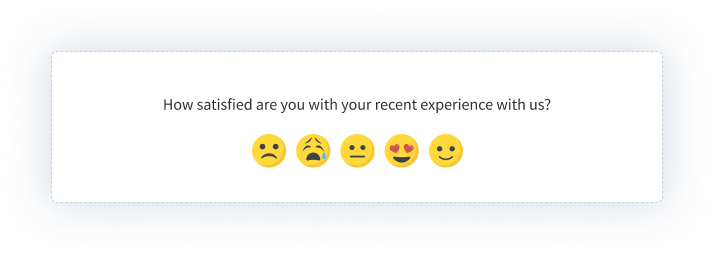
4. Customer Experience Survey Questions on Post-Purchase
Post-purchase survey questions are sent after customers have made a purchase to assess their experience. They help you understand the customer journey from shopping to buying and post-purchase satisfaction. Customer experience survey questions on post purchase identify areas where customers face issues or where they find the experience exceptional, guiding improvements to retain customers.
-
Were you able to easily find the product you were looking for?
-
How would you rate your overall experience with your recent purchase?
-
Were you satisfied with the variety of products available for purchase?
-
Did the checkout process meet your expectations in terms of simplicity and efficiency?
-
Were there any obstacles or frustrations you encountered during the purchase process?
-
How likely are you to make a repeat purchase from us in the future?
-
Was the product description and information provided sufficient for your decision to purchase?
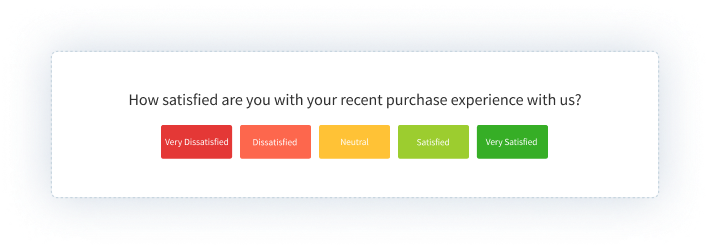
5. Exit Intent Survey Questions
Exit intent survey questions are triggered when a visitor is about to leave your website or platform. They aim to understand why a visitor didn't convert, what may be driving potential customers away, helping to improve user experience and conversions. Here are some customer experience survey questions on exit intent.
-
What led you to leave without making a purchase today?
-
Were you unable to find the specific information or products you were looking for?
-
Did you encounter any technical issues or difficulties while browsing our product?
-
How can we make your experience more satisfying?
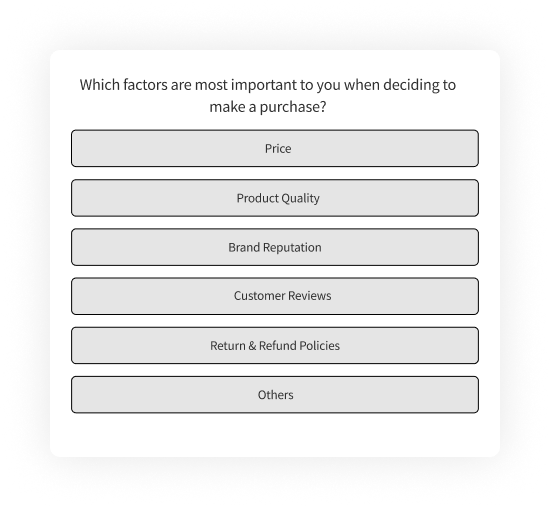
6. Customer Service Feedback Survey Questions
Customer service surveys collect information about the quality of support provided to customers. They're vital to maintain and improve customer service and build positive customer relationships. Here are some customer experience survey questions on customer service performance.
-
How would you rate the quality of service you received from our customer support team?
-
Were your inquiries or issues addressed to your satisfaction?
-
Did the customer support team handle your requests in a timely manner?
-
How professional and knowledgeable did you find our support team?
-
Were there any challenges or issues you encountered during your interaction with our support team?
-
Overall, how would you rate your experience with our customer support on a scale of 1 to 5?
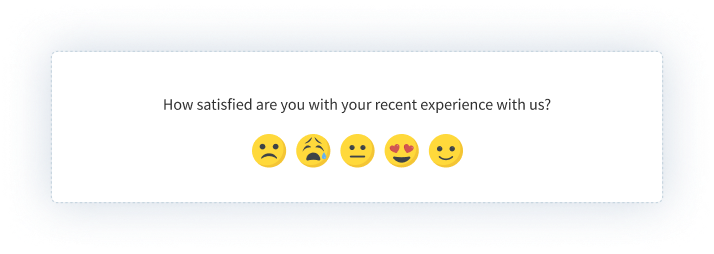
7. Website Feedback CX Questions
Survey questions on website feedback aim to gather insights about users' experiences on your website. They help identify issues, improve navigation, and enhance user satisfaction. Since websites serve as a primary touchpoint for customers, therefore positive user experiences can lead to higher engagement and conversion rates. Here are some customer experience survey questions on website feedback that can also be used in website surveys.
-
How easy was it to find the information you were looking for on our website?
-
Were you satisfied with the speed and performance of our website?
-
Did you encounter any technical issues or glitches while using our website?
-
What additional features or content would improve your experience on our website?
-
Is there any specific feedback you'd like to provide about your overall website experience?
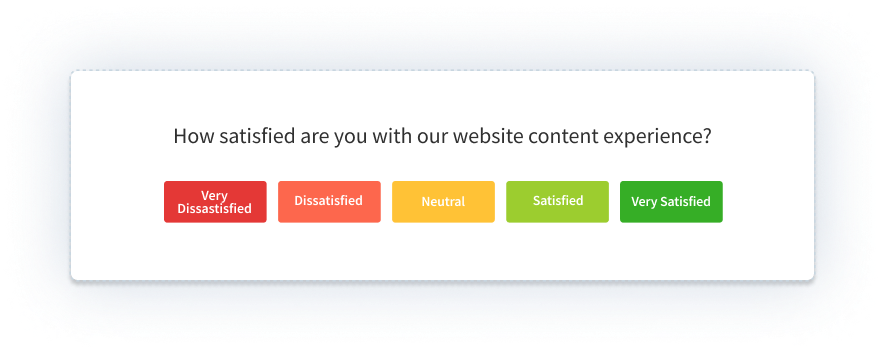
Customer Experience Examples: Inspiring Success Stories
The exceptional customer experiences offered by industry leaders not only delight customers but also set the benchmark for what businesses can achieve in this digital age.
Let us look at some of the best customer experience examples put forth by companies that serve as an inspiration to businesses across the globe.
1. Starbucks
Renowned for its gold-standard customer service, Starbucks delivers a predictable and on-brand experience. Personalization through cup inscriptions, rapid order fulfillment, and the rewards program on its app all contribute to a remarkable customer journey.
The famed pay-it-forward chains also exemplify the brand's commitment to going above and beyond, with lucky customers occasionally receiving free orders.
2. Disney
Disney's Compass Model evaluates four crucial aspects of customer interaction: needs, wants, stereotypes, and emotions. This approach encourages companies to understand customer objectives, exceed basic requirements, challenge assumptions, and elicit positive emotions.
The model's effectiveness extends beyond Disney, as airlines and hospitality brands have implemented it to great acclaim. Aligning your product and customer experience strategy with these four compass points can result in a more delightful customer experience.
3. Apple
Apple is synonymous with customer experiences that lead to loyal customers and high customer satisfaction. A prime example is their transformation of stores into "town squares," emphasizing that Apple does more than sell products. The company enriches people's lives with its devices and technologies. This perspective led Apple to drop the word "store" from its vocabulary.
The new retail concept provides a welcoming, relaxed environment with happier customers, offering not only products but also boardrooms, coding classes, and workshops. With each visit, visitors can explore Apple products in novel and exciting ways, which makes a good customer experience reinforcing the value proposition.
Channels to Send CX Surveys
There are various survey channels that you can utilize to share your CX surveys. However, keep in mind to leverage the channel where you have maximum customer presence. These can include:
-
Website: Sharing surveys on your website is effective in gathering feedback from online visitors. You can employ pop-up surveys, a feedback button on website, embedded data collection forms, or dedicated survey pages to make it easily accessible.
-
SMS: SMS surveys are designed to collect quick and immediate feedback by sending concise survey questions through text messages to customers' mobile phones. This channel boasts high open rates and prompt responses, making it suitable for time-sensitive situations.
-
In-product/In-app: In-product and in-app surveys are embedded directly within your mobile app or software product, appearing as pop-ups or forms. They capture feedback while users are actively engaged with your product, providing insights relevant to their current experience.
-
Kiosk: Kiosk surveys are primarily used in physical locations to deliver location based customer experience, such as retail stores, restaurants, or event venues, often presented through touch screens or tablets. They provide a way to collect immediate feedback from on-site customers, offering valuable insights for brick-and-mortar businesses.
-
QR Codes or Links: QR code survey links can be printed on receipts, packaging, or promotional materials, allowing customers to scan the code or follow the link to access the survey on their mobile devices.
-
Email: Email surveys involve sending survey links or forms to customers' email addresses and are often used for post-purchase or post-interaction feedback. This channel enables personalized and targeted distribution, reaching a broad audience, and can include follow-up reminders.
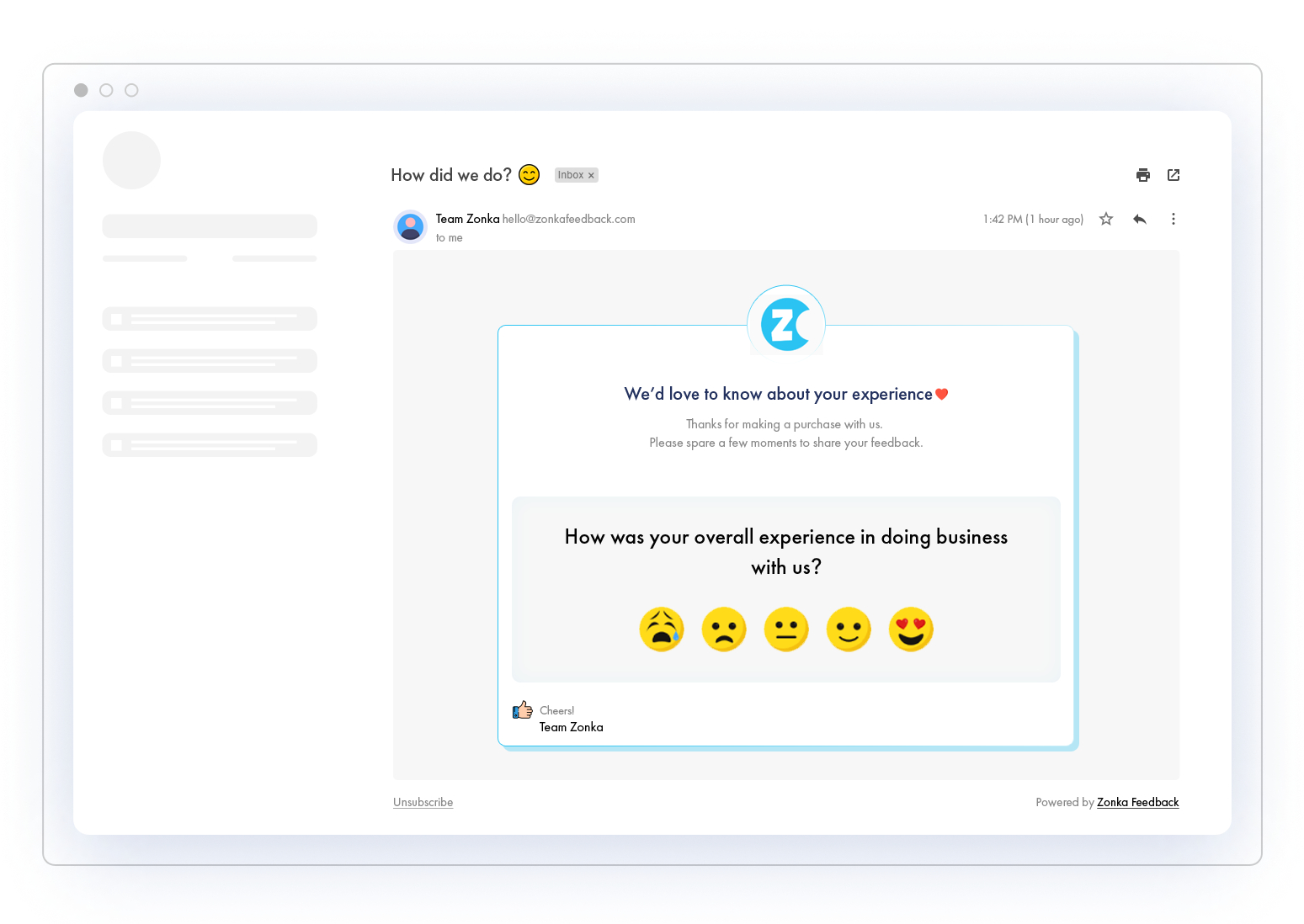
Best Practices for Customer Experience Survey
To make the most of your user experience surveys, just asking the right questions based on survey goals will not suffice. Let us look at some of the best practices that can get you the most out of your customer experience surveys.
1. Strategically Time the Surveys
Timing is crucial when conducting a customer experience survey. Send surveys at strategic touchpoints in the customer journey to capture feedback when it's most relevant. For instance, you might send a survey immediately after a customer interaction or after a purchase, allowing for fresh and accurate insights.
2. Identify Key Drivers in the Customer Journey
Identify the key drivers of the customer experience in your specific industry and context. Different stages in the customer journey have different touchpoints that impact satisfaction. Choose the appropriate survey type (e.g., NPS, CSAT, CES) based on the stage to obtain insights relevant to that part of the customer's journey.
3. Utilize Microsurveys
Long and complex surveys can deter customers from participating and providing honest feedback. Microsurveys, which are shorter and more focused, like NPS surveys, CSAT surveys, tend to have higher response rates. Ask a few targeted questions to avoid survey fatigue and gather more actionable insights.
4. Blend Qualitative and Quantitative Data
While quantitative data (ratings, scores) provides numerical insights, qualitative feedback (comments, open-ended questions) adds depth and context. Combining both types of feedback provides a holistic view of the customer experience, helping you understand not only "what" but also "why" customers feel a certain way.
5. Trigger Surveys Based on User Segments
You can segment customers based on demographics, behavior, or other factors to tailor surveys for specific groups. Different user segments may have unique needs and preferences. By triggering surveys through voice of customer tools that offer user segmentation, you can gather feedback that's more relevant and actionable for each group.
Taking Action on Customer Data
Collecting customer feedback through surveys is only the first step toward enhancing the customer experience. The real power of collecting data lies in the ability to extract valuable insights from this data and take informed actions to drive improvements. Here's how you can effectively take action on the customer data you've gathered:
-
Analyze Data Thoroughly: Start by reviewing the survey data to identify trends, patterns, and areas that require attention. Use data analysis tools to help you gain a deeper understanding of customer sentiments and preferences.
-
Prioritize Key Issues: Once you've analyzed the data, prioritize the most critical issues that need immediate attention.
-
Implement Changes: Translate your findings into concrete actions. This might involve product enhancements, process improvements, or changes in customer service practices. Ensure that all teams are aligned with these initiatives.
-
Seek Customer Input: Continue to engage with your customers and seek their input on the changes you've made. This creates a feedback loop, allowing you to fine-tune your efforts and demonstrate that you value their opinions.
-
Measure Progress: Regularly measure and evaluate the impact of your actions. Use the same or similar surveys to track changes in customer satisfaction and loyal customer base.
-
Iterate and Improve: Don't be afraid to make further adjustments based on ongoing feedback. The customer experience is an ever-evolving aspect of your business.
Create & Send your Customer Experience Survey using Zonka Feedback
Crafting a customer experience survey using Zonka Feedback is exceptionally simple and requires following just a few steps. Whether your aim is to gauge customer sentiment, calculate the Net Promoter Score, get insights on product usability, or appraise employee satisfaction, Zonka Feedback accommodates all these use cases and more. Now, let's delve into the step-by-step process of achieving this.
Step 1: Log in to your Zonka Feedback Account
Register and login to your Zonka Feedback account and click on the 'Add Survey' option.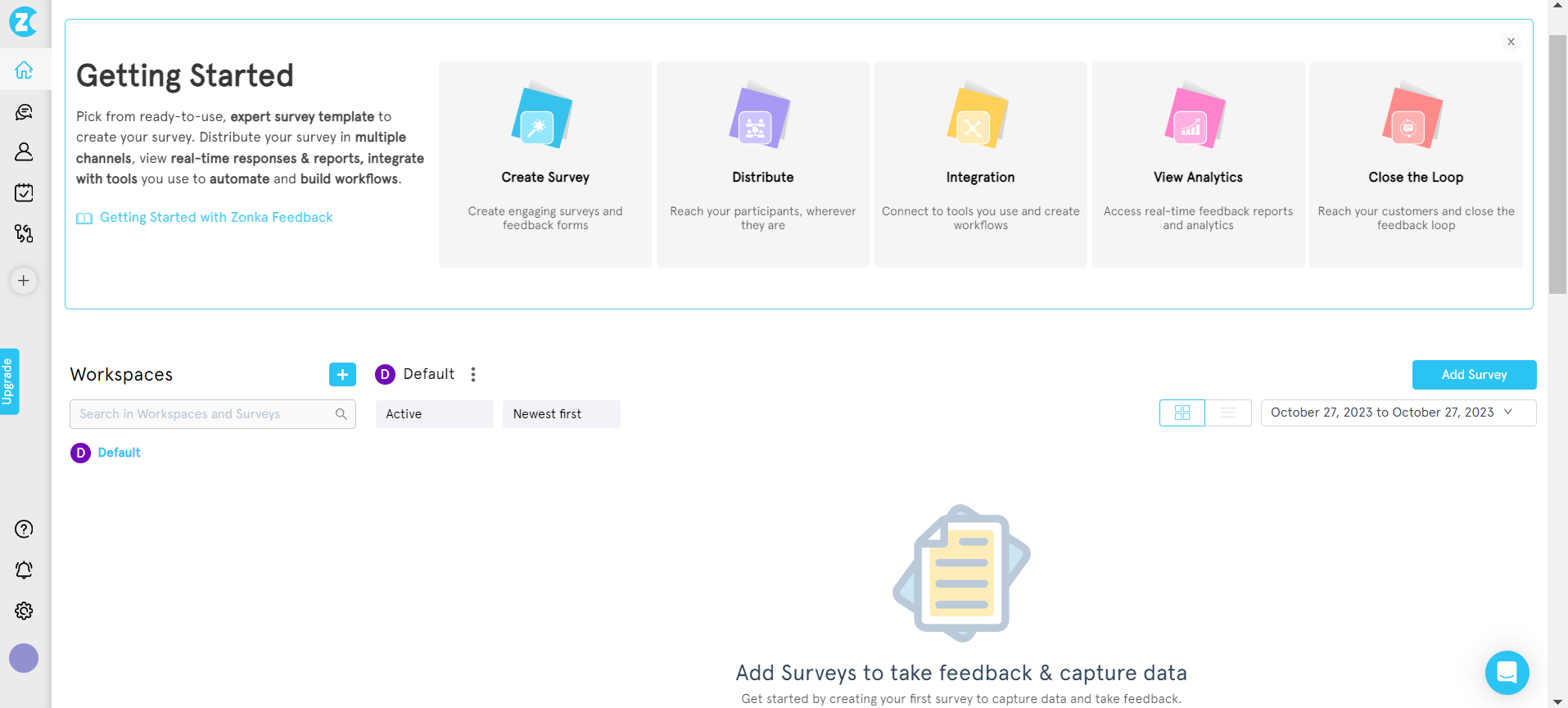
Step 2: Select the Customer Experience Survey Template
Select the template of your choice from the option provided or click on 'Start from Scratch' if you want to create your own survey.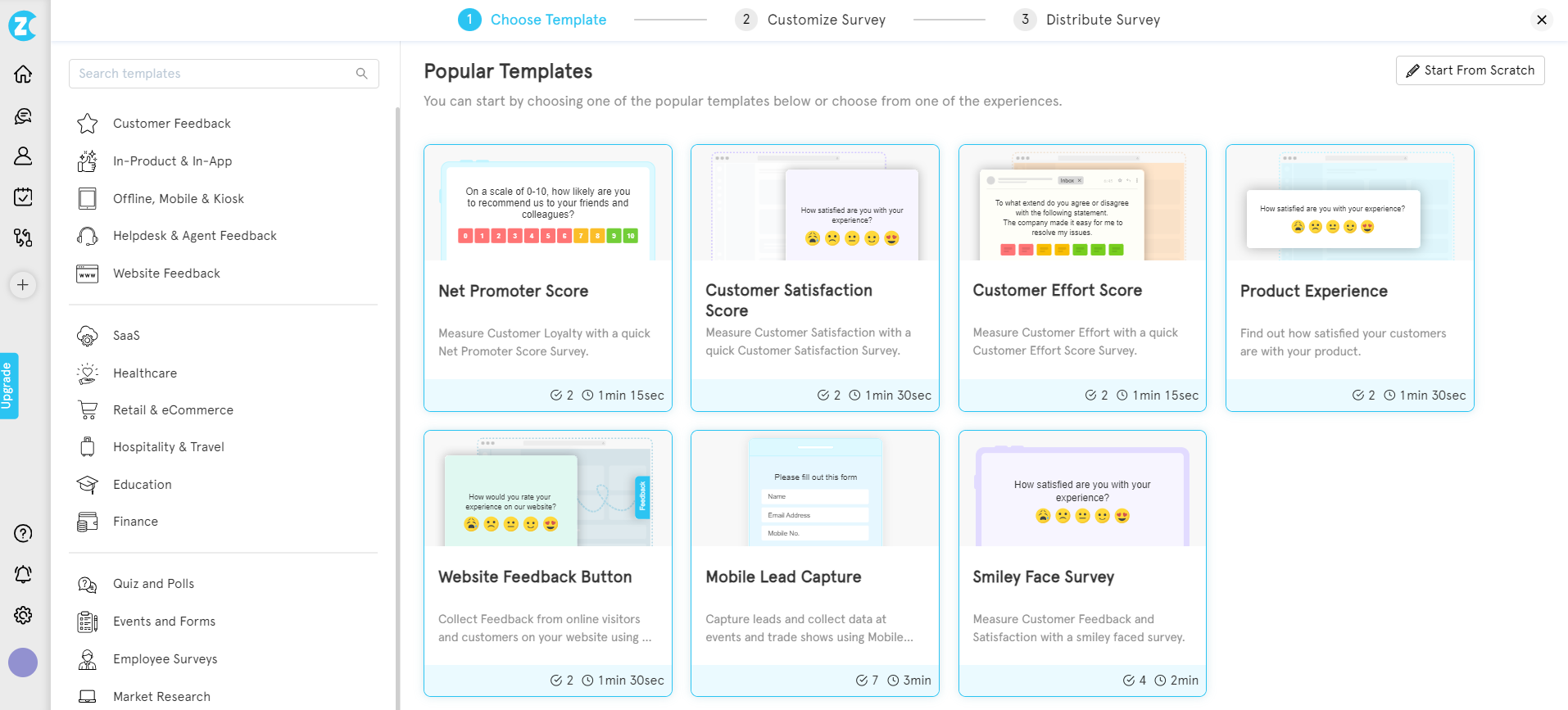
Step 3: Select the Distribution Option
A preview of the selected survey template will appear. Click on the survey collection channel on the left-hand side based on how you want to share CX form (offline, website & in-product, email, SMS, in-app mobile SDK, Link & QR code).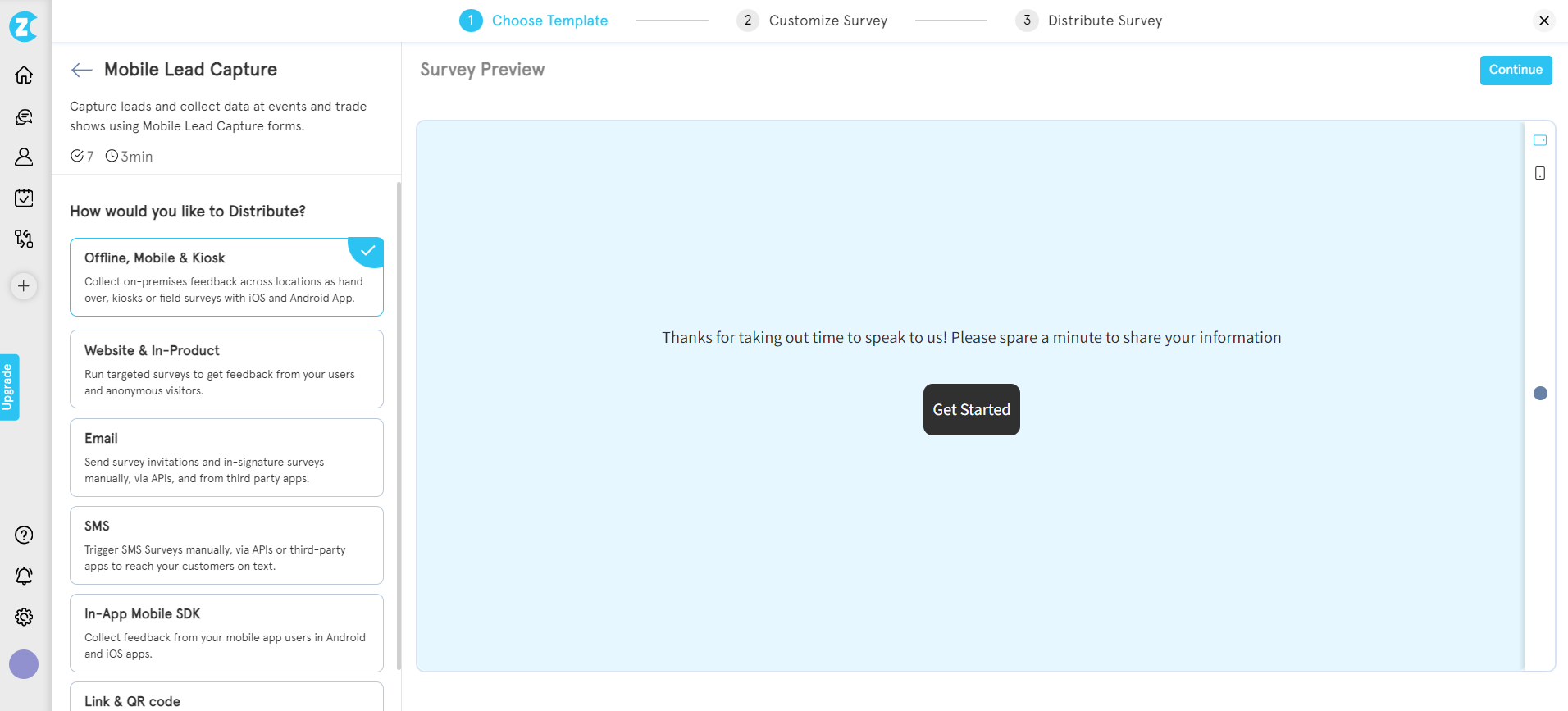
Step 4: Customize your Customer Experience Survey
Edit the survey and explore other functionalities like survey logic, design, variables, etc. You can also add a question, reposition it, choose rating and scales, and contact information to your survey here.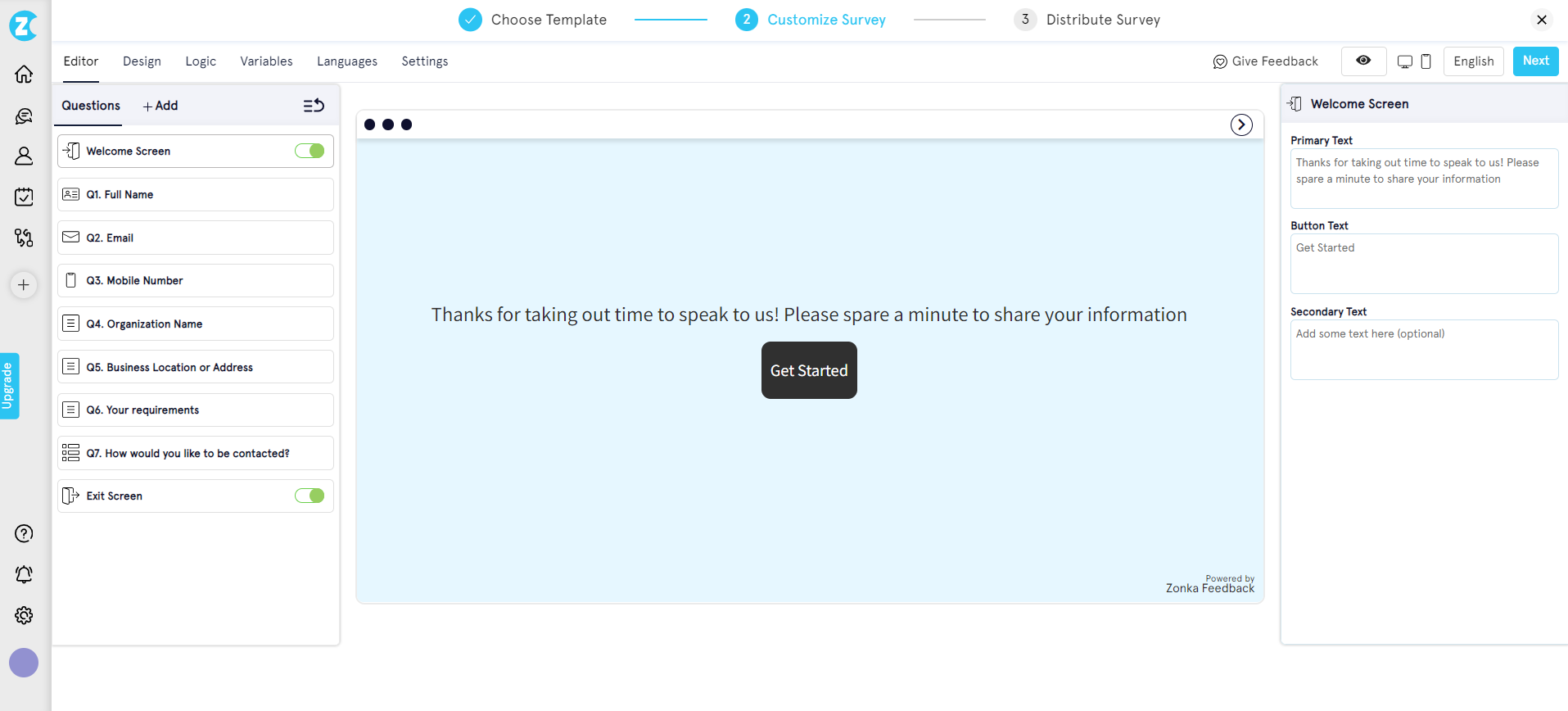
Step 5: Optimize Distribution Channel Selection
Whether you have chosen offline as your data collection form distribution or email or website or SMS, provide contact details like email or mobile number for offline, recipients for email and SMS, web widgets for website and in-product, configuration details for in-app SDK or link and QR codes.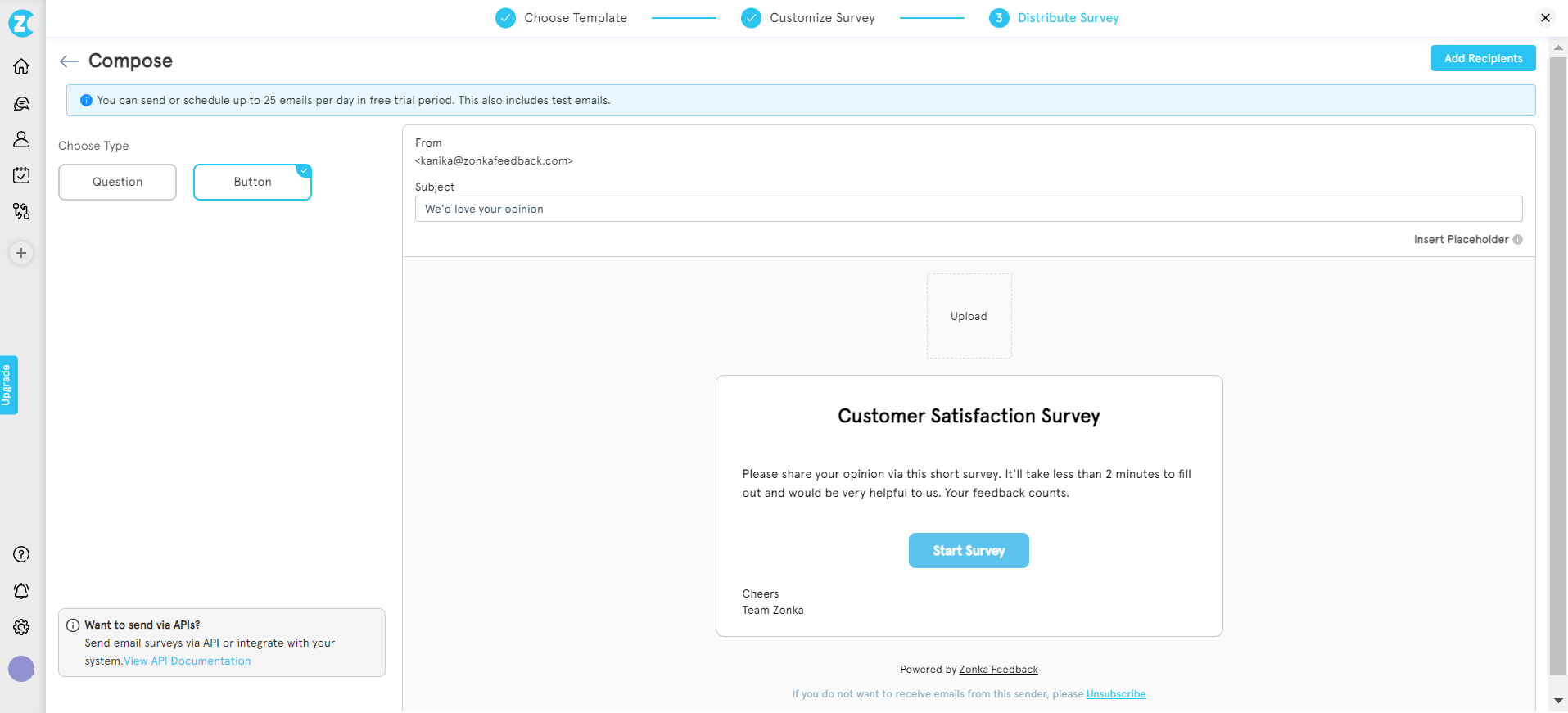
You can also perform user segmentation for seeking survey response from particular groups of users at this stage. For instance, if you want to display your customer experience questionnaire only to those customers who have not taken the survey in the last month, go to 'Contacts and Segment' on the left side, select 'Segments', and add a segment. Fill in the details and conditions as required.
Come back to your CX survey configuration page, select the segment that you created from the list and you are good to go.
Conclusion
CX surveys are pivotal in understanding what customers truly seek. The heart of CX surveys lies in the questions they pose, capturing insights on satisfaction, loyalty, and the entire customer journey. Yet, it's not just about asking; it's about acting. Real transformation occurs when the right survey data is captured and inspires tangible improvements.
Using an online survey tool like Zonka Feedback can help you gather real-time customer feedback, get in-depth survey result analysis, implement feedback-driven improvements, and enhance customer relationships effectively.
Try Zonka Feedback for free for 14 days and start collecting feedback to improve your customer experience and satisfaction.

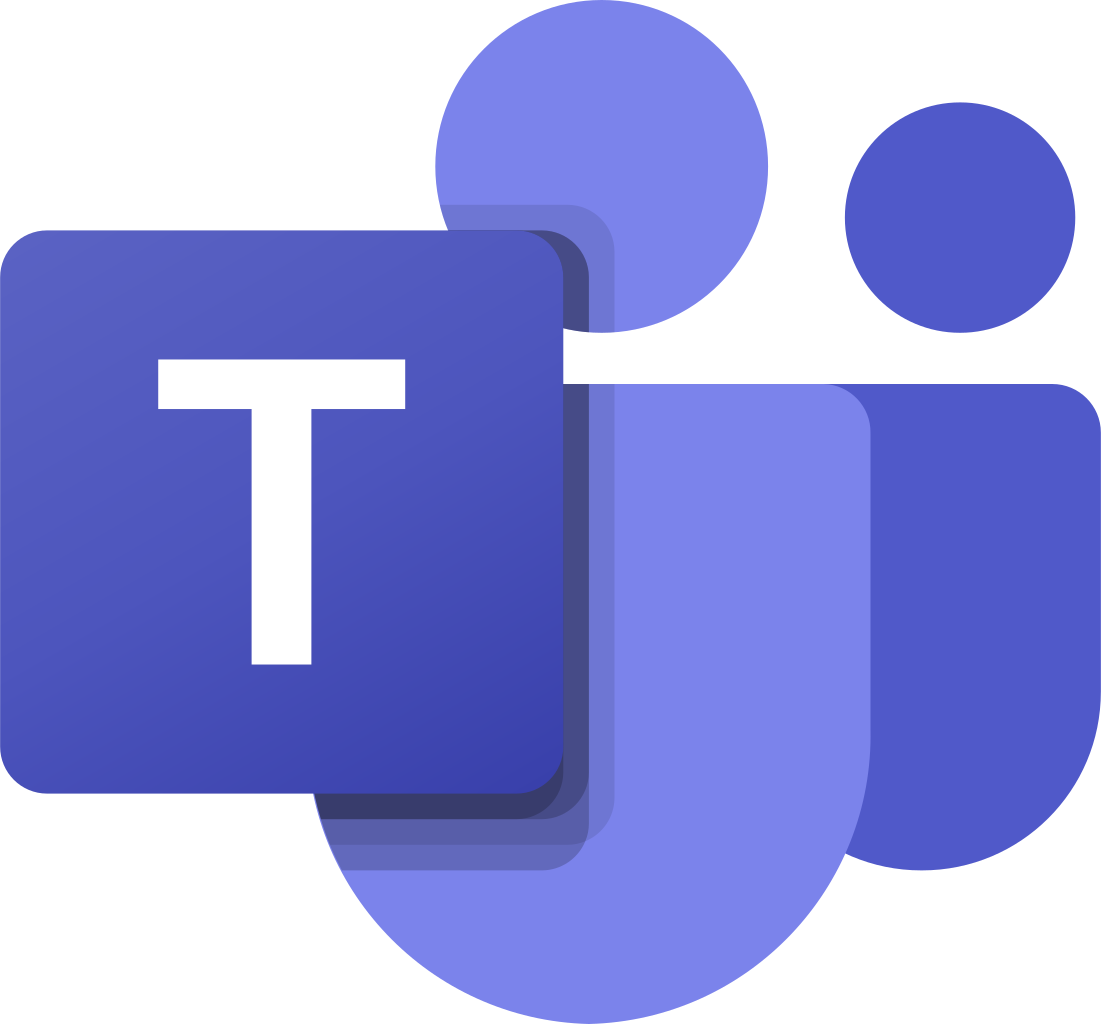 MS Teams
MS Teams